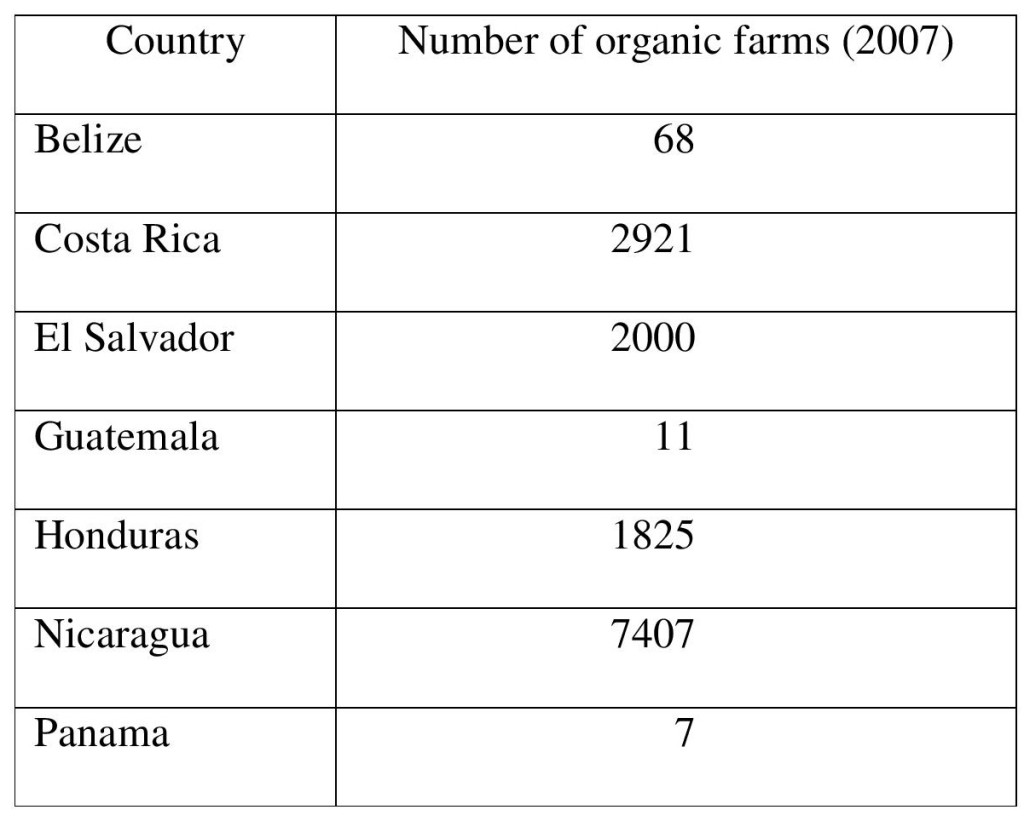The case studies involved in this report and the video link with it come from the Banana Trade Blog produced by Banana Link. The case studies are not from Central America (which is the region of concern for this website), but the issue of organic production of bananas and other tropical produce is of considerable interest to all the producers of such fruits within the region of Central America, especially in the light of increasing resistance of pests to the use of chemical pesticides – and here we refer the reader to the timely article in Media Nature that warns of the most recent banana epidemic to reach the Americas – the article is included here in this month’s updates to The Violence of Development website. So the conclusions to be drawn from the Banana Link blog article and video are certainly of relevance to Central America.We are grateful to Paul Lievens and to Banana Link for permission to reproduce the article in this website.
26 July 2019
By Paul Lievens – comms@bananalink.org.uk
Banana Link Communications & Policy Officer
There is a growing recognition in the
global export banana trade that the prevailing intensive monoculture production
model is not sustainable, and that the development alternative production
models is a pressing necessity. There is a limited shelf life for a production
model that, through increasing reliance on agrochemicals, creates negative impacts on
human health and the environment, while also making the predominant
export cultivar, the Cavendish, increasingly vulnerable to disease.
There are, in some parts of the banana producing world, producers, both big and
small, who are pioneering viable alternative production models. Production that
utilises integrated pest management (IPM)
principles, that employs polyculture or intercropping practices,
along with those employing wholly organic methods.
As a contribution to the debate, Banana Link is working within the World Banana Forum’s Working
Group on Sustainable Production Systems and Environmental Impact to
produce a series of case studies documenting viable alternative production
methods.
The first of these case studies has just been published. It takes a look at the
successful development of organic banana production by Compagnie Fruitière,
primarily at its subsidiary Golden Exotics Limited in Ghana (500 ha), and to a
lesser extent at SCB in Côte d’Ivoire (100 ha) and Finca la Valentina in
Ecuador (150 ha).
We have produced this case study, as we also intend with elements of subsequent
case studies, in video format, which you can view at the foot of this article.
The video isn’t intended to rehearse the arguments in favour of organic
production. I don’t think anyone would argue with the reduction in the negative
impact on human health, the environment and ecosystems that results from
switching from chemically reliant to organic production. But what people do
want to know is whether organic production is viable, sustainable and
profitable, and if so, how it is achieved.
So, in the video we take a look at the technical challenges of organic
production, including management of pests, diseases and water resources, and
the impact of climate change. In Ghana, the dry, and drying, climate is
admittedly more favourable to organic production. For example, the leaf
fungus Black sigatoka thrives
better in more humid conditions, while nematode pests
aren’t present in Ghana. Not that this has deterred Compagnie Fruitière from
developing organic production in the more challenging humid climate of Ecuador.
By utilising organic fertilisers, biological and mechanical control of pests,
and cover crops to maintain soil fertility and retain water, the French fruit
producer has been able to successfully develop organic production over the last
four years and is planning to double that production significantly in the
coming years.
And the bottom line, from a commercial perspective, is that organic production
is, in this case, more profitable than conventional chemically reliant
production. While there are increased labour costs, for example for manual
weeding, the increased price at which organic bananas are sold in a growing
European market for organic bananas means they are better able to cover the
costs of production. But we won’t spoil the video by repeating here their
comparative figures for labour costs, fertilisation, yields and margins between
conventional and organic. We’ll leave you to watch the video yourself.
As Golden Exotics’ Director of Operations, Johan Glo, says at the conclusion of
the video, “To grow organic is to think different”.
The video can be viewed at:
The text and video are also available in Spanish too:
http://bananalink.org.uk/es/%E2%80%9Ccultivar-productos-org%C3%A1nicos-significa-pensar-de-manera-diferente%E2%80%9D-0 If you would be interested in supporting this work, or would like to know more, please contact Paul Lievens at comms@bananalink.org.uk
Copyright © 2019 Banana Link,
All rights reserved.
Mailing address is:
Banana Link
42-58 St George’s Street
Norwich, England NR3 1AB
United Kingdom
